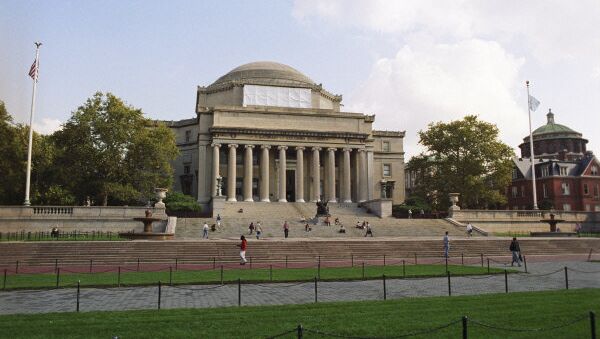WASHINGTON, June 13 (By Maria Young for RIA Novosti) – More than two dozen scholars from across the United States have launched a focused study of Russian-speaking immigrants to the United States over the last century – a rare, in-depth program that kicked off this week at New York’s prestigious Columbia University.
“America’s Russian-Speaking Immigrants & Refugees: 20th Century Migration and Memory,” examines the characteristics, motivations and experiences of Russian-speaking immigrants who came to the United States from the former Russian Empire and Soviet republics beginning in the early 1900s.
“The theme is actually a pressing one, I think, because in the last 10-15 years there’s been an increasing interest in Russia itself, in its groups living in various parts of the world and among the most interesting groups to study in many respects are those ones living here in America,” said Edward Kasinec, co-director of the 2013 Summer Institute, in an interview with RIA Novosti.
“It’s quite common now to be walking the streets of many of our major cities in America and hear Russian being spoken by people of all ages. The Russian presence here is very pronounced, from the orchestras and the ballet companies but also among the businesses,” he added.
Funded through the National Endowment for the Humanities (NEH), an independent federal agency which supports humanities programs in the United States, organizers said the program is unusual because most similar studies focus on one particular group of immigrants or period of immigration.
The 2013 Summer Institute, which runs through the end of June, identifies four waves of the Russophone immigration to the United States: from 1917 to 1940, from 1947 to 1955, from 1967 to 1989, and from 1989 to the present. It also looks at different categories of immigrants, from ethnic Russians and Russian-speaking Jews to Caucasians, Central Asians, and others.
“Both in the homeland and here in America you have a number of groups who are looking at this Russophone immigration to America and studying it from their particular perspective, but unfortunately these groups aren’t necessarily speaking to one another, so one of the purposes of this Institute is to bring together people who are studying all of the aspects of these various waves,” said Kasinec.
The hope is that scholars, who were chosen through a competitive process, will be able to integrate the comprehensive material into new and broader courses on American politics, sociology, immigration and ethnic studies. Organizers also hope the Russophone diaspora can be used as a model to guide the study of other diaspora groups, including such as the Hispanic or Chinese.


